#Low-Carbon Lifestyle
Text
L'empreinte carbone
What is a Carbon Footprint?
In simple terms, your carbon footprint is the amount of carbon dioxide released into the Earth's atmosphere as a result of human activities, rather than any natural emissions. We produce carbon dioxide through a lot of different actions, such as using electricity, transport, clothes, food, and even throwing out trash! All of this carbon is having a negative effect on the atmosphere, contributing to Global Warming.

We can think of our carbon footprint like any other kind of footprint - it is the trail of carbon dioxide we leave behind us during our daily lives. All of your actions and possessions add up to create your individual carbon footprint. If we actively try to lower our carbon footprint, we can have a positive impact on carbon emissions by cutting the amount of CO2 we produce.

Carbon Footprints can be thought of in a number of different ways. We often talk about carbon footprints of one individual, but you can also think about the carbon footprint of a business, state, or country as a whole.
What makes up your Carbon Footprint?
Any action, item, or process that involves any fuel to be burned will produce some carbon that is added to the atmosphere. This could be anything from taking a long-haul flight to eating a cheeseburger and some fries.
Most things require some amount of carbon to be produced, but the amount of carbon created varies between each item and action. Here are a few of the most common contributors:
Transport:
There are many different types of transport, and some produce more carbon than others. Fossil fuels burned for transportation creates the largest contribution of greenhouse gases to the U.S.'s carbon footprint.
One of the worst offenders for carbon emissions are airplanes, with each passenger contributing around 250 g of CO2 per kilometer. In fact, one return flight from New York to London produces 986kg of CO2 per passenger, more than the average person would use in a year from 56 countries around the globe, including Burundi and Paraguay!

Flights are closely followed by cars and other private transport modes, this is because the carbon emissions are shared between a very small group of people. On average, 404 g of CO2is produced per mile traveled in a light-duty vehicle, and with around 253 million light vehicles operating in the US, that's a lot of carbon dioxide!
However, some modes of transport do offer a less carbon-heavy way of traveling. Taking buses, trains, and trams typically have less of an impact as they are shared by lots of passengers. Car shares are also a good option as they move multiple people to the same place and divide up the emissions between them.
But the best mode of transport by far is to walk or cycle. These modes of transport contribute almost no carbon at all to the atmosphere, plus they can keep us fit and healthy too!

Electricity and Heat:
The second largest contributor to the U.S. carbon footprint is the production of electricity and heat from fossil fuels. This process fuels much of the things we use in our daily lives. From ovens to refrigerators, mobile phones to laptops, and lamps to speakers, all kinds of household items use electricity whenever we use them.

As well as the various gadgets and goods we use, we also use fossil fuels to heat and cool our homes. Whether you use electricity, gas, oil, coal, or even wood, the process of heating your home will normally produce a large amount of carbon emissions.
However, this is slowly changing as renewable and clean sources of energy are becoming more common. These energy sources produce no carbon dioxide once they are set up, and can sometimes be cheaper to use too!
Food:
Food production and transportation contributes to around one quarter of the world's carbon emissions. While transportation of our food does contribute carbon emissions, it is often the farming processes and land required to produce our food that has the largest impact.

Some of the foods with the largest carbon emissions are items such as meat and dairy, as the animals used to produce them use up a lot of food, care, water, and land. Other foods that have bad carbon records include things like coffee and chocolate, often because land is being cleared to produce them, which causes more carbon to enter the atmosphere.
Why are carbon emissions bad for the environment?
Carbon dioxide is just one of a number of greenhouse gases that can be found in our atmosphere, alongside things like methane, water vapor, nitrous oxide, and ozone. CO2 occurs naturally in the environment, but it is also produced in huge quantities as a result of human activities.
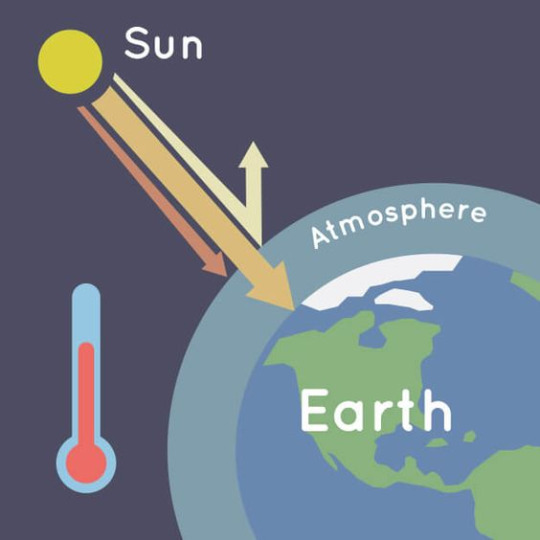
The greenhouse gases that collect in the atmosphere trap heat that has radiated from the Earth. Normally, greenhouse gases would keep the Earth at a steady temperature, but this is changing. As more and more carbon dioxide collects in the atmosphere, more and more heat is trapped too. This contributes to rising temperatures on Earth and the damaging effects of climate change.
Climate change is a huge concern for the planet, and many see it as the greatest threat to humanity in the 21st century. This process causes long-term changes to our planet's environment, such as rising average temperatures and changes in precipitation levels. As the Earth warms, other changes will take place, such as:
Rising sea levels and flooding.
Disappearing glaciers in mountain areas.
Ice melting in areas such as Antarctica and the Arctic.
Changes in plant growth patterns and animal hibernation.
How can you reduce your Carbon Footprint?
Next time you're heading out to somewhere nearby, why not walk or cycle instead of taking the car? Or if you're traveling a little further from home, try the bus or train to cut down the carbon.

Recycle as much of your trash as possible instead of sending it to landfill and try to make compost from your food waste instead of sending it to landfill.

Use your heating and air conditioning as little as possible by wearing clothes that are suited to the current temperature instead of relying on energy to change the temperature.

Plant up your yard with herbs, fruits, vegetables, and flowers - these can help you grow your own food and help remove carbon from the atmosphere through photosynthesis!
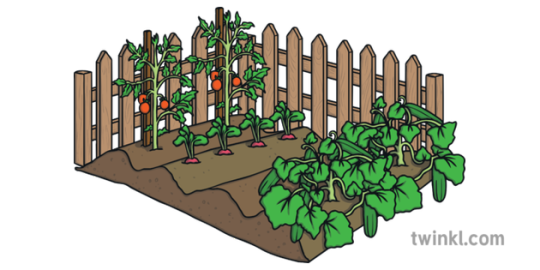
Bring your own bag to the grocery store so that you don't have to get new ones and try to avoid items that use lots of packaging, especially ones with lots of plastic.

Aim to cut down your meat consumption to a few meals a week, while this can be a tricky one, it can make a real difference to how much carbon dioxide your food is responsible for.

Make sure to turn electronics fully off when you're not using them as they can still use precious energy when they're on standby, causing more fossil fuels to be burned. Try to use as little energy as possible and don't leave any lights or switches on for too long.
Source
Twinkl Teaching Wiki. "Carbon Footprint - Twinkl Teaching Wiki." Accessed May 6, 2024. https://www.twinkl.com/teaching-wiki/carbon-footprint#:~:text=In%20simple%20terms%2C%20your%20carbon,and%20even%20throwing%20out%20trash!.
#Carbon Footprint Reduction#Sustainable Living#Eco-friendly Tips#Climate Action#Sustainable Transportation#Waste Management#Energy Conservation#Urban Gardening#Plastic Reduction#Meatless Meals#Electronic Energy Savings#Green Living#Environmental Responsibility#Low-Carbon Lifestyle#Eco-conscious Choices#Taylor Swift#The Eras Tour#The Green Era#Evansville#Indiana
0 notes
Text
¿Conoces la huella de tus alimentos?

¿Sabías que es posible calcular la huella de carbono, de agua o de uso de recursos de tus alimentos? 🥙🍋
Con la app ComidAprueba puedes conocer el impacto de tu alimentación sobre el planeta y elegir alimentos y recetas para reducir tu huella 👣 🌎
Descárgala en tu móvil y prueba una forma de comer más sostenible 🤗
¡Aquí te contamos más sobre ella! App ComidAprueba
#Alimentación sostenible#Estilos de vida sostenible#Vida de baja huella#Huella ambiental#Huella de carbono#Huella hidríca#Recursos#Sostenibilidad#Sustainable Food#Sustainable Lifestyles#Low Footprint Life#Environmental Footprint#Carbon Footprint#Water footprint#Resources#Sustainability#Recipes
1 note
·
View note
Text
Smooth Rides: Commuting with Your eBike
Why a Commute on an E Bike is an Eco-Friendly and Cost-Effective SolutionTravelling on an e bike brings many advantages, consisting of being eco-friendly and affordable. Let’s explore why.
Eco-Friendly SolutionTravelling through e bike is an environment-friendly option as e-bikes are powered by a rechargeable battery, which does not release pollutants and contaminants into the environment. These…

View On WordPress
#bike to work#commuter bike#commuting#cost-effective#ebike#eco-friendly#efficient#electric bikes#electric transportation#environmentally conscious#green commuting#healthy lifestyle#low-carbon#pedal-assist#smooth rides#sustainable living#sustainable transportation#time-saving#urban commuting
0 notes
Text
Home Updates and Other Lifestyle Changes for a More Eco-Friendly Life
Living a more eco-friendly lifestyle often means making small changes to the way you do things at work and at home, and it doesn’t have to break the bank. In fact, going green often saves money in the long run, especially when it comes to running your household. Being more thoughtful about sustainability can help you protect the natural resources around you for generations to come, so think about…

View On WordPress
#Climate Change#Eco-conscious living#Eco-friendly living#Eco-friendly products#Energy Efficiency#Environmentally conscious#Green home#Green living#Home updates#Low carbon footprint#Renewable Energy#Sustainable design#Sustainable home#Sustainable lifestyle#Waste reduction
1 note
·
View note
Text
As the American sociologist Immanuel Wallerstein recognized, capitalism fuels economic growth through shifting the cost of that development onto the Global South. So long as this externalization of costs runs smoothly, those of us living in the Global North can enjoy a rich lifestyle and avoid suffering the consequences of environmental crises. This is how we’ve been able to avoid thinking seriously about the true cost of our expansive lifestyles for so long.
[...]
The dilemma is this: As the economy grows, the range of human economic activity grows too, which means that the volume of resource and energy consumption will also grow, making it difficult to reduce carbon dioxide emissions. This is a historical tendency.
In other words, even green economic growth may cause increases in carbon emissions and resource use in direct proportion to its success because economic growth is historically accompanied by more frequent consumption of bigger commodities, including ones in wasteful and carbon-intensive industries. This in turn will necessitate more and more dramatic increases in efficiency, but there is an insurmountable physical limit to the improvement of technological efficiency. This is the Growth Trap, a major pitfall awaiting capitalism as it attempts to establish a zero-carbon economy. The question is, can this trap be avoided?
Unfortunately, escaping this trap is unlikely. Sustaining a growth rate of 2–3 percent for the GDP would necessitate the immediate reduction of carbon dioxide emissions by 10 percent every year to hit the 1.5° C target. If we leave it to the market, the likelihood of achieving a yearly reduction rate as dramatic as 10 percent or more is very low.
[...]
Make no mistake: Green New Deal–style governmental platforms enabling large-scale investment into remaking nations at a fundamental level are indispensable in the struggle to combat climate change. It’s undeniable that we must make the transition to solar energy, electric vehicles, and the like. Public transportation systems must be expanded and made free to all, bicycle lanes must be built, public housing fitted with solar panels must be created—these sorts of works projects, driven by public spending, are all vital.
But these things are not enough. It might sound counterintuitive, but the goal of any Green New Deal should not be economic growth but rather the slowing down of the economy. Measures to stop climate change cannot double as ways to further economic growth. Indeed, the less such measures aim to grow the economy, the higher the possibility they’ll work.
79 notes
·
View notes
Text
Zero waste pet ownership is a great thing to aspire to. Stick to safe, all natural toys made with renewable and compostable materials. If and only if your vet says that it's safe you can make food from scratch, or find some pet food bulk bins. If your cat is agreeable, use pine pellets for litter. Et cetera.
But it's 100% ok if that's not something you can do. My dog's favorite toy is made of polyester, and my cats only eat food that comes in non recyclable bags. And that's totally fine, because you have to recognize one thing: these animals' lives are our responsibility. Sacrificing their health, safety, or happiness for a tiny amount of difference in carbon use is not ok.
Understand that your priorities must be well aligned. This extends beyond pet care, and to all different kinds of consideration towards animals. It's fine to be vegan, but remember that all "vegan leather/wool" is plastic, and its production and degradation are terrible for the environment and the animals in it. It's great to focus on a plant based diet, but you must remember that the purchase of out of season fruits and vegetables create more waste and carbon emissions than simply buying local. There's nuance to all this, and you must have patience for both yourself and others.
Love your pets, and breathe easy. There's plenty of other aspects of living where you can prioritize a low impact lifestyle, without forsaking our beloved furballs.

#zero waste#sustainability#anti consumerism#anti consumption#eco friendly#sustainable#environment#pets#pet care#cats#dogs#cat#dog#animal#animals#animal care
84 notes
·
View notes
Text

New SpaceTime out Friday...
SpaceTime 20240412 Series 27 Episode 45
Perseverance collects its 24th sample on Mars
NASA’s Mars Perseverance Rover has just collected its 24 geological sample from the surface of the red planet. The drill core offers new clues about Jezero Crater and the lake it may have once held.

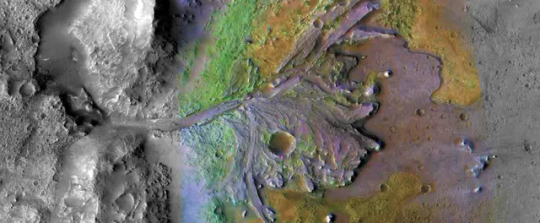


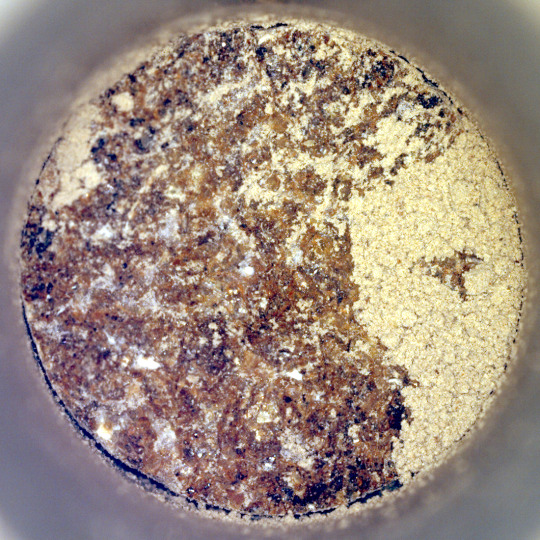

New date set for Starliner's first manned mission
NASA has set May 6 as the opening of the launch window for the first manned flight of Boeing’s long troubled CST-100 Starliner. The flight to the International Space Station was originally slated for this month.









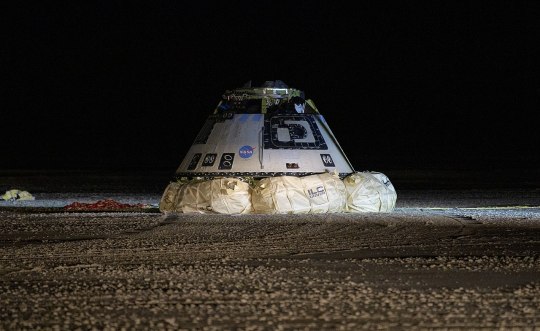
Space junk slams into a Florida homeNASA says it’s analyzing an object that crashed into a Florida man's home last week which is suspected of being piece of debris jettisoned from the International Space Station.

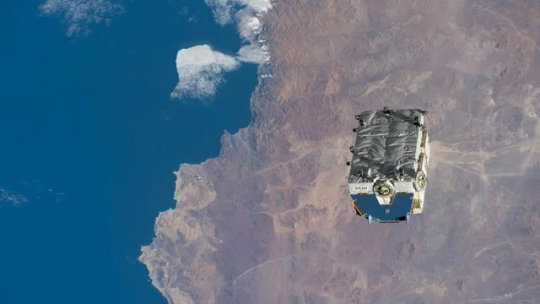
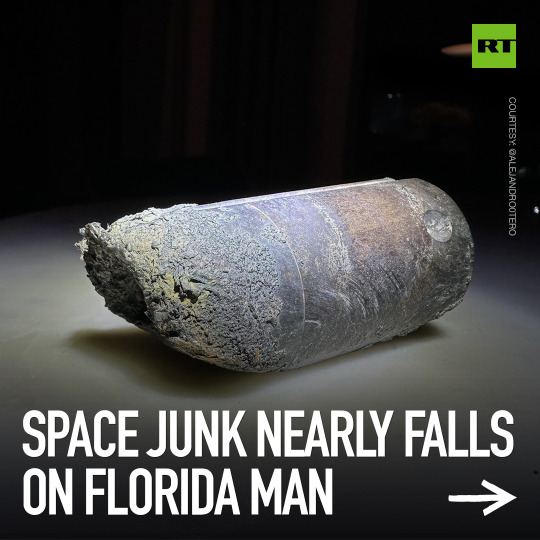
The Science Report
New research shows that the warming climate will turn Australia’s soil into a net emitter of carbon dioxide.
A new study claims women with a low resting heart rate had a slightly higher chance of a criminal lifestyle.
Identifying criminals by airborne forensic DNA evidence.
Skeptics guide to African witchcraft trials
SpaceTime covers the latest news in astronomy & space sciences.
The show is available every Monday, Wednesday and Friday through Apple Podcasts (itunes), Stitcher, Google Podcast, Pocketcasts, SoundCloud, Bitez.com, YouTube, your favourite podcast download provider, and from www.spacetimewithstuartgary.com
SpaceTime is also broadcast through the National Science Foundation on Science Zone Radio and on both i-heart Radio and Tune-In Radio.
SpaceTime daily news blog: http://spacetimewithstuartgary.tumblr.com/
SpaceTime facebook: www.facebook.com/spacetimewithstuartgary
SpaceTime Instagram @spacetimewithstuartgary
SpaceTime twitter feed @stuartgary
SpaceTime YouTube: @SpaceTimewithStuartGary
SpaceTime -- A brief history
SpaceTime is Australia’s most popular and respected astronomy and space science news program – averaging over two million downloads every year. We’re also number five in the United States. The show reports on the latest stories and discoveries making news in astronomy, space flight, and science. SpaceTime features weekly interviews with leading Australian scientists about their research. The show began life in 1995 as ‘StarStuff’ on the Australian Broadcasting Corporation’s (ABC) NewsRadio network. Award winning investigative reporter Stuart Gary created the program during more than fifteen years as NewsRadio’s evening anchor and Science Editor. Gary’s always loved science. He studied astronomy at university and was invited to undertake a PHD in astrophysics, but instead focused on his career in journalism and radio broadcasting. He worked as an announcer and music DJ in commercial radio, before becoming a journalist and eventually joining ABC News and Current Affairs. Later, Gary became part of the team that set up ABC NewsRadio and was one of its first presenters. When asked to put his science background to use, Gary developed StarStuff which he wrote, produced and hosted, consistently achieving 9 per cent of the national Australian radio audience based on the ABC’s Nielsen ratings survey figures for the five major Australian metro markets: Sydney, Melbourne, Brisbane, Adelaide, and Perth. The StarStuff podcast was published on line by ABC Science -- achieving over 1.3 million downloads annually. However, after some 20 years, the show finally wrapped up in December 2015 following ABC funding cuts, and a redirection of available finances to increase sports and horse racing coverage. Rather than continue with the ABC, Gary resigned so that he could keep the show going independently. StarStuff was rebranded as “SpaceTime”, with the first episode being broadcast in February 2016. Over the years, SpaceTime has grown, more than doubling its former ABC audience numbers and expanding to include new segments such as the Science Report -- which provides a wrap of general science news, weekly skeptical science features, special reports looking at the latest computer and technology news, and Skywatch – which provides a monthly guide to the night skies. The show is published three times weekly (every Monday, Wednesday and Friday) and available from the United States National Science Foundation on Science Zone Radio, and through both i-heart Radio and Tune-In Radio.
#science#space#astronomy#physics#news#nasa#esa#astrophysics#spacetimewithstuartgary#starstuff#spacetime
12 notes
·
View notes
Text
...It's so bizarre to see old-world monarchs and like, the pope, talk about the importance of nature and the climate lately
Like, I mean, I guess that makes some sense. Modern monarchies - with the exception of oil states - have no real vested interest in unsustainable growth, and every interest in making sure the country they are supposed to represent... You know, remains healthy and prosperous. And like, does not have to radically change due to climate change and the political and social upheaval that can cause.
But it's still strange when you see these articles about these highly traditional old-world institutions being like "Ah yes, we must protect the ecosystem."
7 notes
·
View notes
Photo







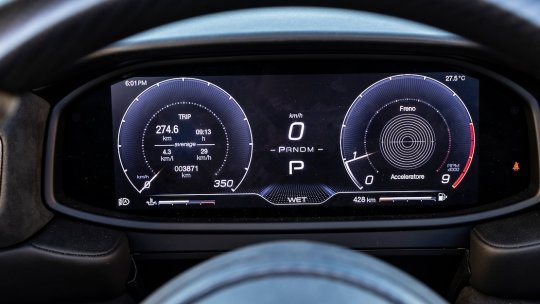


Maserati MC20 Cielo
Cielo means “sky” in Italian, and we knew the MC20 Spyder was imminent the moment the company rebooted itself by launching the coupé. What we couldn’t foresee is Maserati’s plan to help supercar drivers get rid of their unfortunate hat choices by introducing a folding hardtop with Polymer-Dispersed Liquid Crystal technology, the more advanced smart glass Mercedes and McLaren customers could only dream of under their less sufficient SPD glass roofs. What’s more, Maserati says the full-electric version of the MC20, the upcoming Folgore will also come first as a Cielo Spyder.
There are two active glass solutions in the luxury automotive segment. The suspended particle roof from automotive supplier Gauzy is transparent when not under power, and can only go from a light 30 percent tint to “a nearly opaque” 95-percent tint. The Maserati glass roof developed by Webasto, however, is fully opaque when the car is parked, going fully transparent if you wish. What’s more, it offers 96-percent ray reflection due to a filter layer at the bottom, alongside better thermal and noise isolation. In practice, it looks something like this from the passenger seat:Operating at speeds up to 31 mph, this 12-second folding roof represents a 143-pound weight penalty over the coupé, not bad at all. The carbon fiber monocoque is layered and foamed differently to maintain a high torsional rigidity, which is also aided by the one-piece aluminum frame of the roof mechanism, bolted in between the monocoque and the rear shock towers. Sixty percent of the spyder’s 3,395 pounds is on the rear axle, which now uses a milder differential ratio as well.The chassis settings, power curves and performance figures remain unchanged. The slightly higher rear section brought a minimal increase in drag, while the springs are a touch stiffer to compensate for the extra weight, aided by more rebound. Being the lifestyle choice, the MC20 Cielo Spyder isn’t here to break track records, yet will still reach 62mph in 3.0 seconds, and keep going until the 200 mph mark.
A popular design feature of the hardtop MC20 happens to be its rear screen with the trident-shaped cutouts that aid cooling of the 3.0-liter twin-turbo V-6. With that piece being replaced by the roof holder and its cover, design chief Klaus Busse and his team went for new boomerang-shaped outlets cut into the side fenders, while engineering came up with deflectors that channel clean air to the intercooler through the equally discreet additional air intakes. Busse explained that while his design team insisted on retaining the MC20’s sleek roofline and clean side profile, engineering got every chance to use the bottom half of the car, finished in carbon fiber instead of body color to optimize aerodynamics, resulting in the retained downforce levels and low drag despite the raised rear panel.
Optionally, for those who miss the rear screen, Maserati is offering a large titan finish Trident logo sticker on the roof cover panel, which screams MASERATI at everybody driving behind when the roof is raised or dropped. It's also something of a visual trick to hide the cover’s extra volume.
40 notes
·
View notes
Note
things an individual must do in order to adopt and survive in environmental changes and challenges
I believe it's more about societies than the mere individual. The fact is, we are in this together, and we not only need to change our way of life to prevent and reverse climate change, but also to survive all the challenges that are unstoppable now.
From efficient low or 0 energy cooling architecture, varied locally sourced foods and low carbon transportation (such as public transport) to switching to renewables and buying just what you need, there are a lot of changes that we can implement that not only tackle climate change and make it easier to live with the challenges brought on by global warming, but are also healthier and economically smart.
However, please try to not sacrifice yourself too much. The best sustainable lifestyle is the one that you can sustain. And it's always better to save some energy for systematic change than to live miserably while oil companies announce record-breaking profits.
#lifestyle#qna#climate change#climate crisis#climateaction#crisis#environmental activism#activism#climate activism#activist#climate science#plastic#global boiling
15 notes
·
View notes
Text
In order for multinational corporations to protect their freedom to pollute the atmosphere, peasants, farmers, and Indigenous people are losing their freedom to live and sustain themselves in peace. When the Big Green groups refer to offsets as the “low-hanging fruit” of climate action, they are in fact making a crude cost-benefit analysis that concludes that it’s easier to cordon off a forest inhabited by politically weak people in a poor country than to stop politically powerful corporate emitters in rich countries—that it’s easier to pick the fruit, in other words, than dig up the roots.
The added irony is that many of the people being sacrificed for the carbon market are living some of the most sustainable, low-carbon lifestyles on the planet. They have strong reciprocal relationships with nature, drawing on local ecosystems on a small scale while caring for and regenerating the land so it continues to provide for them and their descendants. An environmental movement committed to real climate solutions would be looking for ways to support these ways of life—not severing deep traditions of stewardship and pushing more people to become rootless urban consumers. [...]
Geographer Bram Büscher coined the term “liquid nature” to refer to what these market mechanisms are doing to the natural world. As he describes it, the trees, meadows, and mountains lose their intrinsic, place-based meaning and become deracinated, virtual commodities in a global trading system. The carbon-sequestering potential of biotic life is virtually poured into polluting industries like gas into a car’s tank, allowing them to keep on emitting. Once absorbed into this system, a pristine forest may look as lush and alive as ever, but it has actually become an extension of a dirty power plant on the other side of the planet, attached by invisible financial transactions. Polluting smoke may not be billowing from the tops of its trees but it may as well be, since the trees that have been designated as carbon offsets are now allowing that pollution to take place elsewhere.
The mantra of the early ecologists was “everything is connected”—every tree a part of an intricate web of life. The mantra of the corporate-partnered conservationists, in sharp contrast, may as well be “everything is disconnected,” since they have successfully constructed a new economy in which the tree is not a tree but rather a carbon sink used by people thousands of miles away to appease our consciences and maintain our levels of economic growth.
—Naomi Klein, This Changes Everything (2014)
#climate change#environmental politics#anti capitalism#indigenous rights#god i just wish i could post the entire book#there is a whole chapter about extractivism and the first words are about the history of nauru#and the entire chapter ends up tying back into this former story so beautifully and horrifyingly in a way that is almost poetic#you just had to be there man
4 notes
·
View notes
Text
What I learnt is that Highgrove jam has ripe organic strawberries, lemon, sugar cane and a splash of Marc de Champagne in it. I've read more than one comment that it is delicious! Unlike ARO, the strawberries will be from a regional organic farm. Not a kitchen potager. Since lemons are a regional specialty in Santa Barbara, I'd expect to see lemon in the ARO recipe. If production is scaled up, regional organic berries will need to be sourced there too.
One fan wrote that Meghan is a "sustainable girly". Well so am I. At least I try. So if I want a similar jam, I'll make my own or buy local. Plus my own would likely have less sugar. I read about a similar local venture that Meghan and Harry have visited. They sell things like expensive honey made by bees from movie stars' hives. Personally, I don't need a yoga blanket or candle. But others will buy these things just to say they have it. Not the 1%ers mind you.
I take a different point of view. If these new ventures (products/show/blog etc) are successful and pay the bills, they will have less time to be sharing personal grievances and recollections about the BRF. And I suspect from this point moving forward the latter will keep their interactions spare so there is no info to share - however accurate or inaccurate it would be.
So onwards and upwards for ARO. Wishing them success and busy days ahead as they build a company that has a low carbon footprint and employs happy employees who are paid a fair wage, with benefits.
6 notes
·
View notes
Text
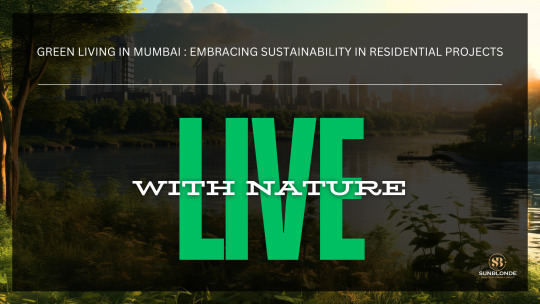
Green Living in Mumbai : Embracing Sustainability in Residential Projects
In the bustling metropolis of Mumbai, where urban life pulses with energy, there's a growing consciousness towards sustainable living. As the cityscape evolves, so does the approach to residential projects, with a shift towards eco-friendly initiatives and sustainable practices. Here's how Mumbai is leading the charge towards green living
Eco-Friendly Residential Projects:
From LEED-certified buildings to developments designed with eco-friendly materials, Mumbai is witnessing a surge in green residential projects. These initiatives prioritize energy efficiency, water conservation, and waste reduction, offering residents a healthier and more sustainable lifestyle.
Waste Management Initiatives:
Adopting a zero-waste approach, many residential complexes are implementing robust waste management systems. Composting facilities, segregation at source, and recycling programs empower residents to minimize landfill waste and embrace a more sustainable lifestyle.
Green Spaces Amidst Urbanity:
Amidst the concrete jungle, developers are carving out green spaces within residential complexes. Rooftop gardens, vertical gardens, and landscaped courtyards not only enhance the aesthetic appeal but also promote biodiversity and improve air quality, creating tranquil retreats amidst the urban chaos.
Certifications and Recognitions:
With sustainability becoming a key differentiator, many residential projects in Mumbai are pursuing green building certifications such as IGBC (Indian Green Building Council) certification or GRIHA (Green Rating for Integrated Habitat Assessment) rating, underscoring their commitment to environmental stewardship.
Energy-Efficient Design:
Sustainable architecture is becoming increasingly prevalent in Mumbai's residential landscape. Incorporating features like solar panels, energy-efficient appliances, and passive design principles, these homes minimize energy consumption and carbon footprint, paving the way for a greener future.
Water Conservation Measures:
With water scarcity being a pressing issue, residential projects in Mumbai are implementing innovative water conservation measures. Rainwater harvesting systems, greywater recycling, and low-flow fixtures help reduce water wastage and alleviate the burden on municipal resources.
#realestate#sunblonderealty#mumbai#realestateprojects#reality#mumbairealestate#dreamhome#propertyfinder#maharera#luxuryliving#green living#Living with nature#sustainable living#sustainable lifestyle#sustainable energy#mumbai nature
2 notes
·
View notes
Text
like it's all politically fine and fun to yell at western (white) societies for pollution and ecological degradation but also....
these societies are low natality yet their population, and the global population, (as well as our carbon consumption and every other metric of ecological destruction) keeps increasing
so the elephant in the room here is that the increasing emissions of the low-natality west are directly sustained by the high natality of the global south and its migrants.
'unsustainable lifestyle' is synonymous with a decent quality of life; this is what the articles 'experts' on this try to eschew (sometimes) but it's the unavoidable truth. if you want to have good quality of life without killing the planet, you need to figure out how to do so with less people in total. if you want to preserve the planet and maintain or increase natality, you must reduce the average quality of life.
so in that overall context, no i don't think the men responsible for miserably poor countries having birth rates of 4, 5, 6+ children per woman get to point the finger at the west. the poorest most oppressed colonized person on the planet can freely afford not to father children.
6 notes
·
View notes
Text
Getting Your Hands Dirty: My kinda Beginner's Guide to Starting Gardening
Hi! I wanted to share some information on gardening. This spring I will be getting my hands dirty and start planting some flowers. I hope I have a green dumb.
Getting Started with Gardening
1. Assess Your Space:
Before diving into gardening, evaluate the available space you have. Determine whether you'll be gardening indoors, outdoors, or both. Consider factors like sunlight exposure, soil quality, and available water sources.
2. Choose Your Plants Wisely:
Select plants that are suitable for your climate and space. Beginners might find it easier to start with low-maintenance plants like herbs, succulents, or tomatoes. Research the specific needs of each plant, including watering frequency and sunlight requirements.
3. Gather Essential Gardening Supplies:
Equip yourself with basic gardening tools such as a trowel, pruning shears, watering can, and gloves. Depending on your gardening goals, you may also need pots, potting soil, fertilizer, and stakes for support.
4. Start Small:
Don't overwhelm yourself by trying to create a large garden right away. Begin with a small plot or a few containers, and gradually expand as you gain confidence and experience. Starting small allows you to learn and adapt without feeling overwhelmed.
5. Learn and Experiment:
Gardening is a continuous learning process. Take advantage of resources like gardening books, online forums, and local gardening clubs to expand your knowledge. Don't be afraid to experiment with different plants, techniques, and designs to discover what works best for you.
5. Facts on How Gardening Can Benefit Your Life
1. Stress Relief:
Gardening has been shown to reduce stress levels and promote relaxation. Spending time in nature, tending to plants, and connecting with the earth can have a calming effect on the mind and body.
2. Physical Exercise:
Engaging in gardening activities such as digging, planting, and weeding provides a moderate form of exercise. It helps improve flexibility, strength, and cardiovascular health, contributing to an active lifestyle.
3. Mental Well-being:
Gardening has therapeutic effects on mental health, including reducing symptoms of anxiety and depression. The act of nurturing plants and witnessing their growth can instill a sense of purpose and accomplishment.
4. Fresh Food and Nutrition:
Growing your own fruits, vegetables, and herbs allows you to harvest fresh, nutritious produce right from your garden. It promotes a healthy diet rich in vitamins, minerals, and antioxidants, while also reducing reliance on store-bought produce.
5. Environmental Impact:
Gardening encourages environmental stewardship by fostering a deeper connection to nature and promoting sustainable practices. It contributes to biodiversity, supports pollinators, and reduces carbon footprint through carbon sequestration in plants and soil.
In conclusion, gardening offers a multitude of benefits beyond just beautifying your surroundings. Whether you're seeking stress relief, physical exercise, mental well-being, or environmental sustainability, starting a garden can enrich your life in numerous ways. So roll up your sleeves, grab your gardening tools, and get ready to embark on an exciting journey of growth and discovery!
2 notes
·
View notes
Text
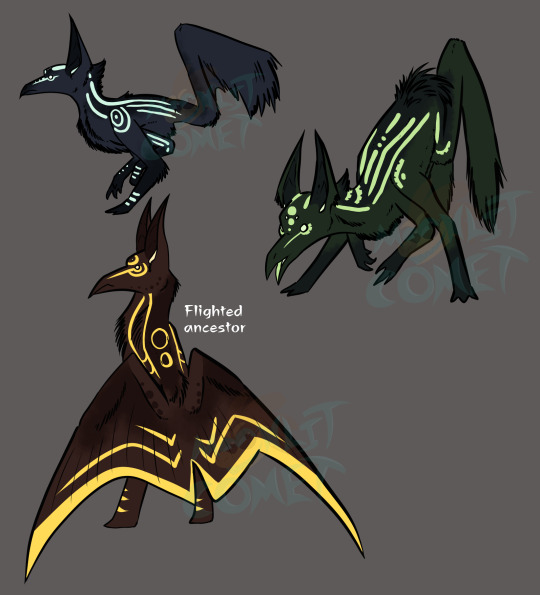
A rework of a very old OC species of mine, the eshue[esh-way]. In the past I leaned too far into the "original furry species" direction instead of the bizarre alien direction I originally intended, so here's a new take on them.
Eshue are a mysterious and strange species of sophont alien that are technically hexapods, as were the rest of the vertebrate species on their home planet. Their walking limbs are not arms but modified middle legs, with the femur part of the leg being fused by flesh into their main body.
The "tail" of an eshue is a semi-fused pair of reduced wings, which is used for balance and communication with other eshue.
Eshue have a pair of light intensity-detecting parietal eyes on top of their heads, which appear to resemble eyebrows in some fashion. Their regular eyes are more advanced, but still rather primitive, being more useful for detecting high levels of electricity and heat. Eshue cannot see color and have a hard time detecting creatures that have low levels of bodily electricity. Instead, they prefer to view alien worlds with mostly sound, their large ears being so well-developed that they are nearly on par with the precise hearing capabilities of earth bats.
Eshue feed solely on electricity, heat, and sunlight, being acid-based organisms that - somehow - manage to be living perpetual motion machines. While an eshue can technically live forever as long as they keep moving, many take on a much more sedentary lifestyle, and it is still required for them to rest and therefore to eat.
The bright markings on an eshue's body are featherless patches of thin skin that will glow brighter the faster an eshue is moving. Defensive electricity is released from these bare patches, which protects them from predators and attackers.
Eshue constantly release oils from their skin and feathers, which protects them and keeps their skin moisturized. These oils, while harmless to life from the eshue homeplanet, have a devastating effect on carbon-based life. They are known to punch holes in carbon-based DNA, which leads to sickness, cancer, and death.
While eshue are typically very social aliens and many do go out of their way to befriend and bond with non-eshue sophonts, a major problem with communicating with these individuals is their high toxicity and the amount of pollution eshue leave behind. One eshue has little effect on the environment, but a large group of them can create acidic, oily, toxic wastelands hostile to carbon-based life just through the nature of their existence.
3 notes
·
View notes